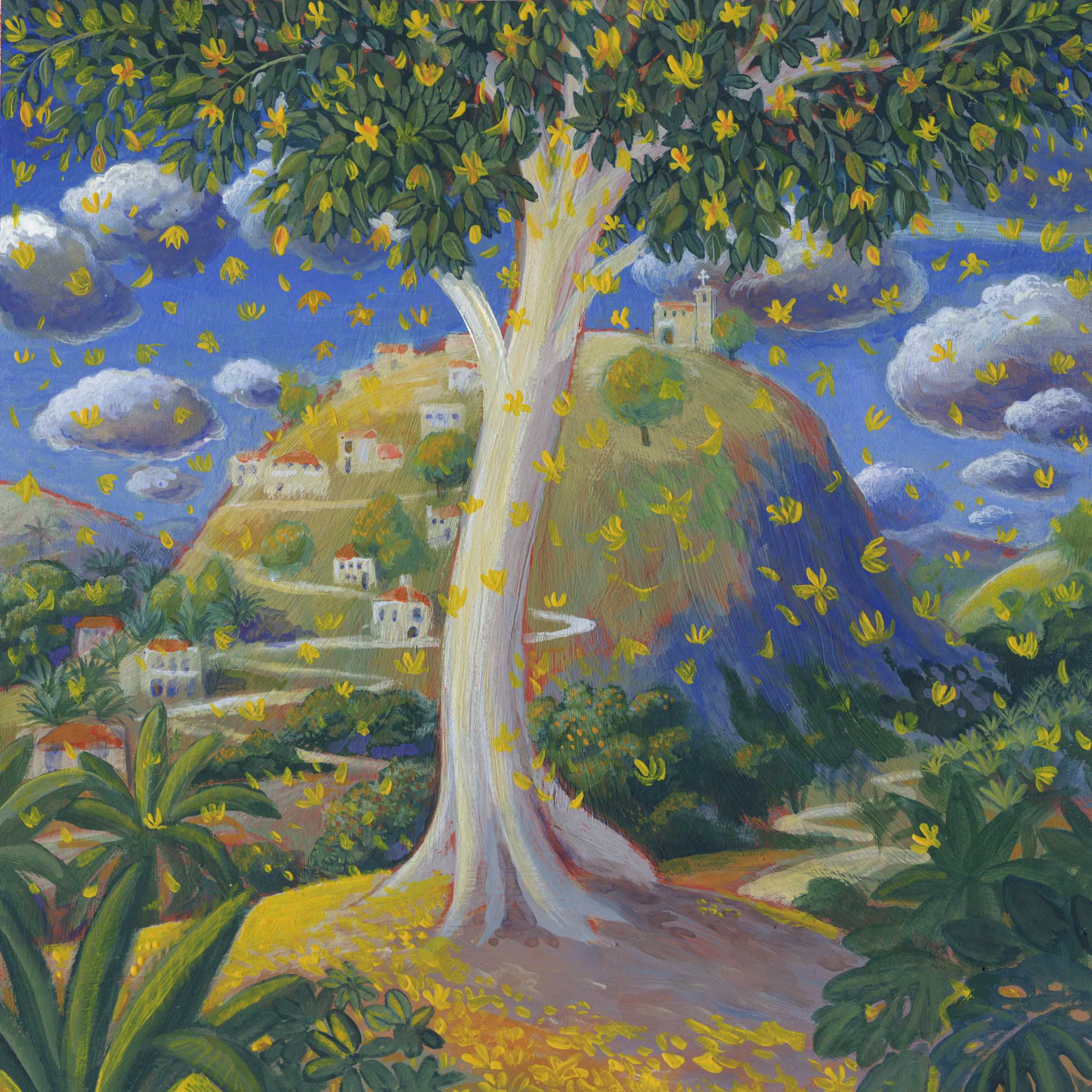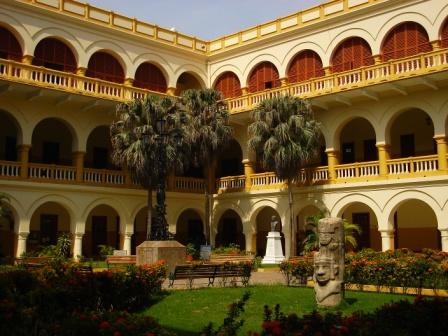While
One Hundred Years of Solitude is full of magical realism, for the sake of readership, I will cover just a few. But where to start? With miracles? With the supernatural? With medical wonders? Or how about just starting with an idea of what to look for?
The fantasy matter in García Márquez's novel forms a broad and diverse spectrum ranging from the literally extraordinary though nonetheless possible, to the farthest extremes of the physically fabulous and unlikely.( Bell-Villada 110)
So, for the rest of this post, let's look at some examples. For this post, we'll focus mostly on the manner of death for the characters as each one is unique from any other in the family. Within these individual deaths, each one is appropriate or echoic of the life lived by each individual character.
* Colonel Aureliano Buendía decides to kill himself and having his gun handy, shoots himself in the chest. However, the gun passes right through his back without damaging a single vital organ. While this is scientifically possible, it's not likely. (While he fails in this attempt, it is ultimately a firing squad shooting him that leads to his death.)
* When Úrsula passes away, thousands of birds fall from the sky in mourning. (This idea is in fact derived from a little tidbit of Colombian history. In 1925, the N/S El Niño current in the Eastern Pacific killed millions of birds caught up in the storm causing them to rain down on the shores of Ecuador and Colombia.)
* Remedios the Beauty ascends into the heavens because she is simply too beautiful to die, or to grow old and lose her youthful splendor.
"Amaranta felt a mysterious trembling in the lace on her petticoats and she tried to grasp the sheet so that she would not fall down at the instant in which Remedios the Beauty began to rise. Úrsula, almost blind at the time, was the only person who was sufficiently calm to identify the nature of that determined wind and she left the sheets to the mercy of the light as she watched Remedios the Beauty waving good-bye in the midst of the flapping sheets that rose up with her, abandoning with her the environment of beetles and dahlias and passing through the air with her as four o'clock in the afternoon came to an end, and they were lost forever with her in the upper atmosphere where not even the highest-flying birds of memory could reach her. (García Márquez 236)
After their death, her suitors bodies emanate a sweet perfume linked to her. The novel suggests that "her mortal effects on the men have obscure biochemical origins." (Bell-Villada 111). Remedios the Beauty serves the novel as the literal femme fatale stereotype since her lovers die
immediately after consummating a relationship with her. (On a side note, her ascent into the heavens derives from the Catholic folk-legend of the Assumption of the Virgin Mary, which has been Catholic dogma only since the 1950's. Many countries in South America celebrate Assumption day on August 15.)
* When Jose Arcadio (the son of the patriarch) dies, his blood trickles across town and through the streets back to his home all the way to his mother's feet. It's easy to see that this is Oedipal and even implies an umbilical connection. In fact, this connection is more evident to the reader when reading the novel in Spanish because García Márquez uses the word
hilo which is often used to say
thread. (Another side note: there's SO much that could be said about the loss of meaning in translation. While the word
trickle is sufficient to describe the passage of blood,
thread strongly emphasizes the mother/child connection.)
The story starts with hope, and the belief that a good life can be forged out of the wilderness in the creation of Macondo. By the end of the novel, death has occurred and the final death is based out of a cryptic prophecy from Melquíades(remember the gypsies?). What's so intriguing is that at the point that Aureliano Babilonia ( great-great-great grandson of the patriarch) finishes deciphering the mysterious scrolls of Melquíades, it is during the birth of his son.
" The first of the line is tied to a tree and the last is being eaten by the ants." (García Márquez 415).
What is so significant about this message? José Aureliano Buendía, the first in this family, after founding Macondo eventually turns away from the magic (i.e. flying carpet brought by the gypsies) towards science and shuts himself off in his laboratory. Over time, his persistent search for a way to control time turns him insane, causing him to believe that he is constantly repeating the same day over and over. What happens? His family ties him to a chestnut tree in the backyard where he lives out the rest of his life. Thankfully, he has his wife, Úrsula Iquarán, to watch over and take his food to him. As his health diminishes, he is moved back into the house to rest in his bed. He passes away from old age and his death starts the sequence of phantasmagorical deaths in the novel. After he dies, tiny yellow flowers fall from the sky!
 "Then they went into José Arcadio Buendía's room,shook him as hard as they could, shouted in his ear, put a mirror in front of his nostrils, but they could not awaken him. A short time later, when the carpenter was taking measurements for the coffin, through the window they saw a light rain of tiny yellow flowers falling. They fell on the town all through the night in a silent storm, and they covered the roofs and blocked the doors and smothered the animals who slept outdoors. So many flowers fell from the sky that in the morning the streets were carpeted with a compact cushion and they had to clear them away with shovels and rakes so that the funeral procession could pass by. (García Márquez 140).
"Then they went into José Arcadio Buendía's room,shook him as hard as they could, shouted in his ear, put a mirror in front of his nostrils, but they could not awaken him. A short time later, when the carpenter was taking measurements for the coffin, through the window they saw a light rain of tiny yellow flowers falling. They fell on the town all through the night in a silent storm, and they covered the roofs and blocked the doors and smothered the animals who slept outdoors. So many flowers fell from the sky that in the morning the streets were carpeted with a compact cushion and they had to clear them away with shovels and rakes so that the funeral procession could pass by. (García Márquez 140).
Melquíades scrolls were a family heirloom, a sort of relic passed down through the generations and while several Buendías attempted to translate them, the only successful one was Aureliano Babilonia. As aforementioned, his son was being born at the moment of his successful translation. In ending the story at this point, the novel completes the ascribed one hundred years spent in solitude in the city of Macondo by the Buendía family.
"...and in that flash of lucidity he became aware that he was unable to bear in his soul the crushing weight of so much past. Wounded by the fatal lances of his own nostalgia and that of others, he admired the persistence of the spiderwebs on the dead rosebushes, the perseverance of the rye grass, the patience of the air in the radiant February dawn. And then he saw the child. It was a dry and bloated bag of skin that all the ants in the world were dragging toward their holes along the stone path in the garden. Aureliano could not move. Not because he was paralyzed by horror but because at that prodigious instant Melquíades' final keys were revealed to him and he saw the epigraph of the parchments perfectly placed in the order of man's time and space: The first of the line is tied to a tree and the last is being eaten by the ants." (García Márquez 415)
At this point, the novel ends since there remains no more stories to be told.










